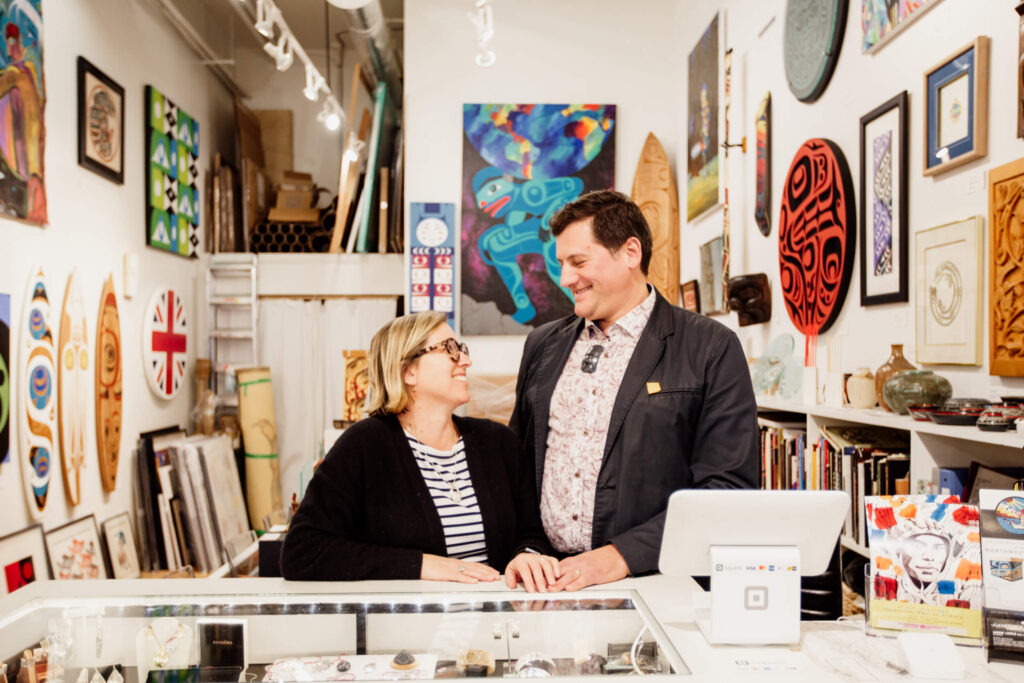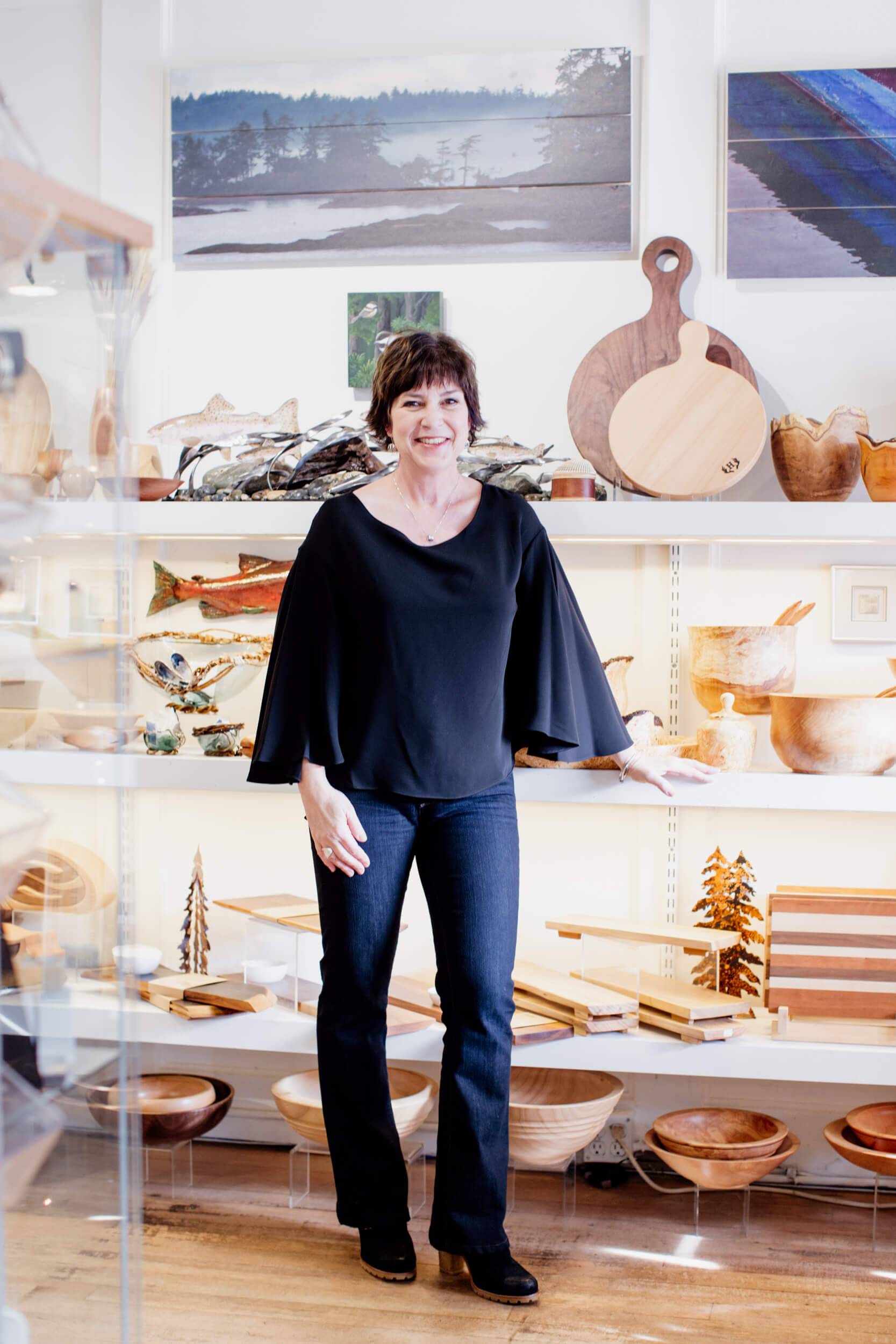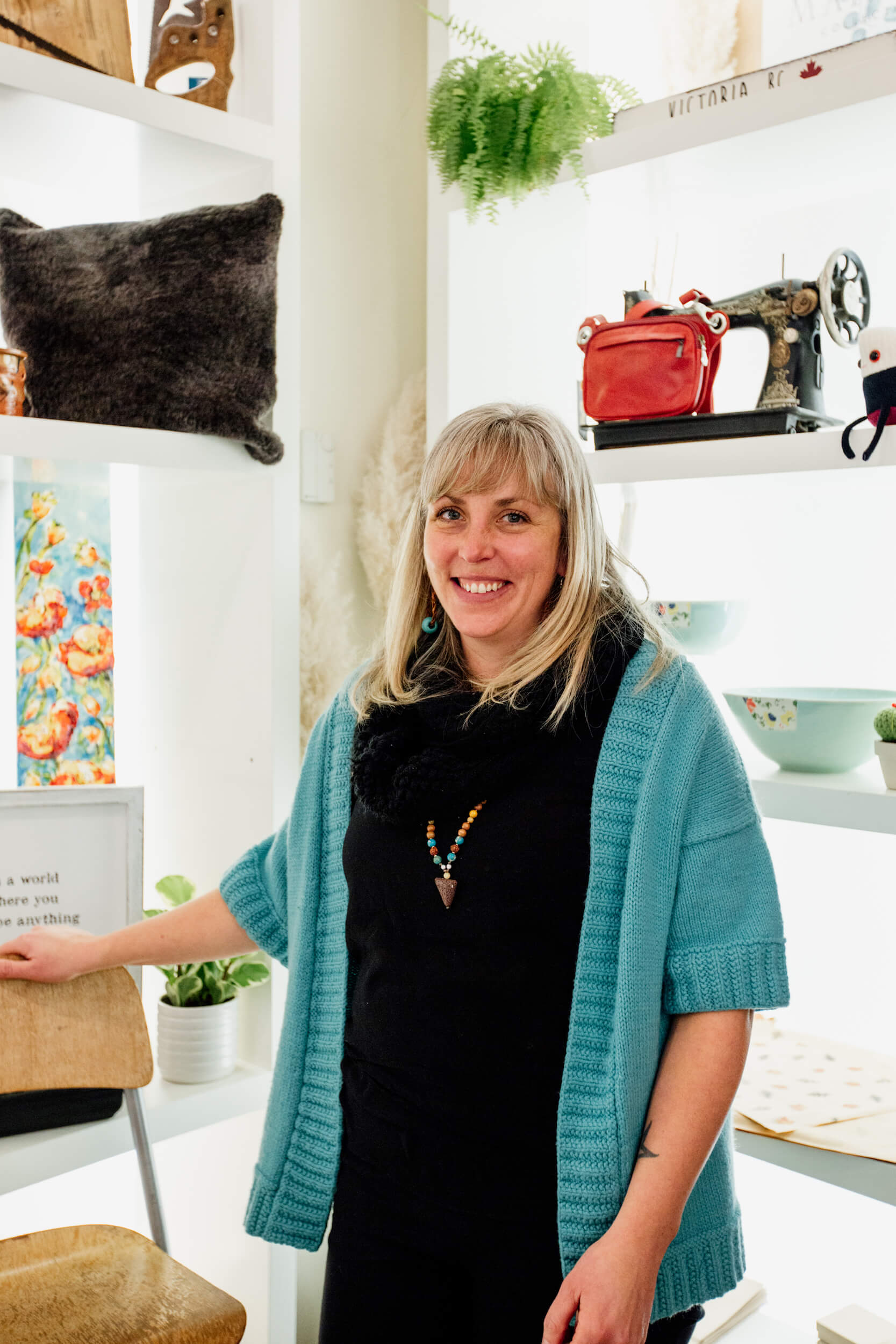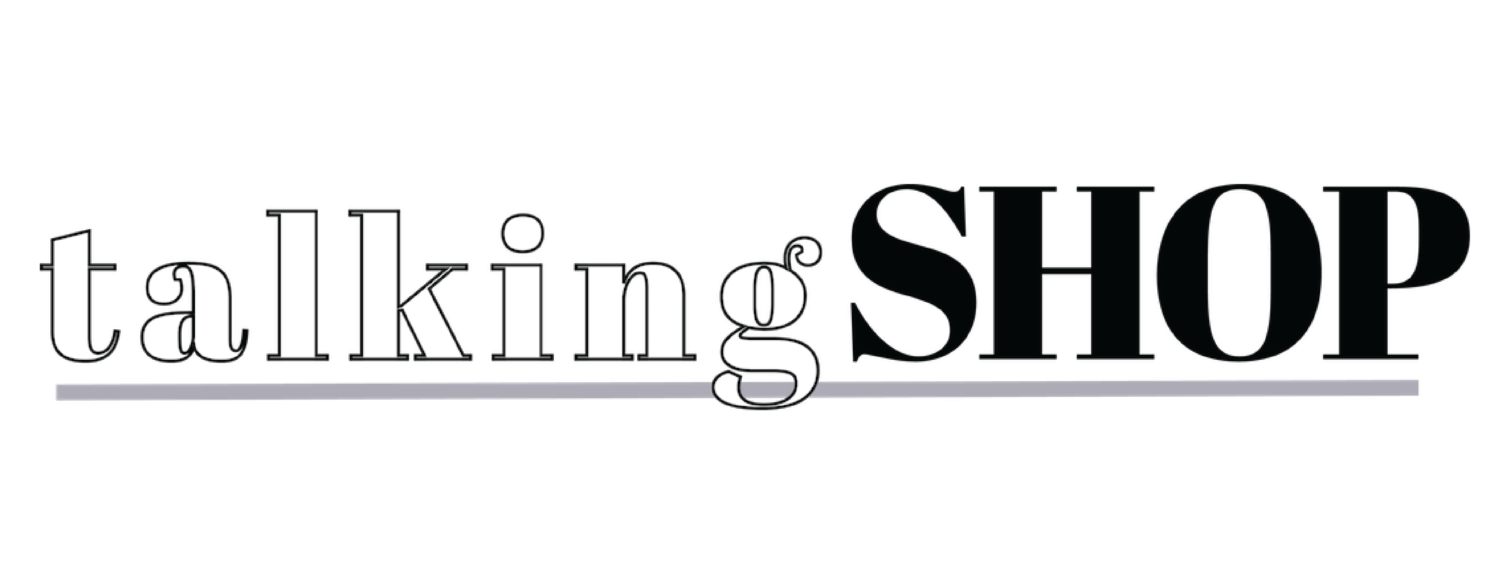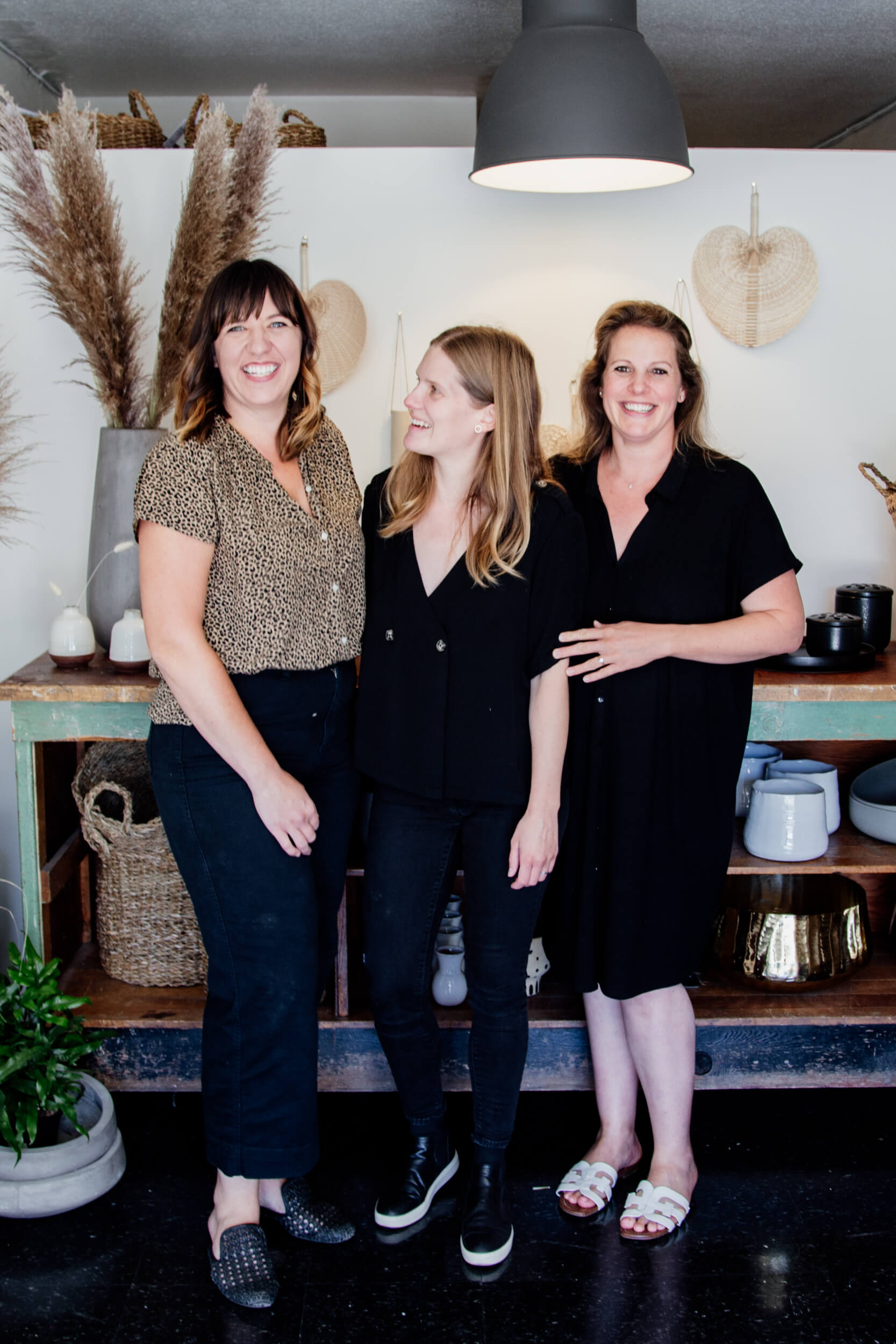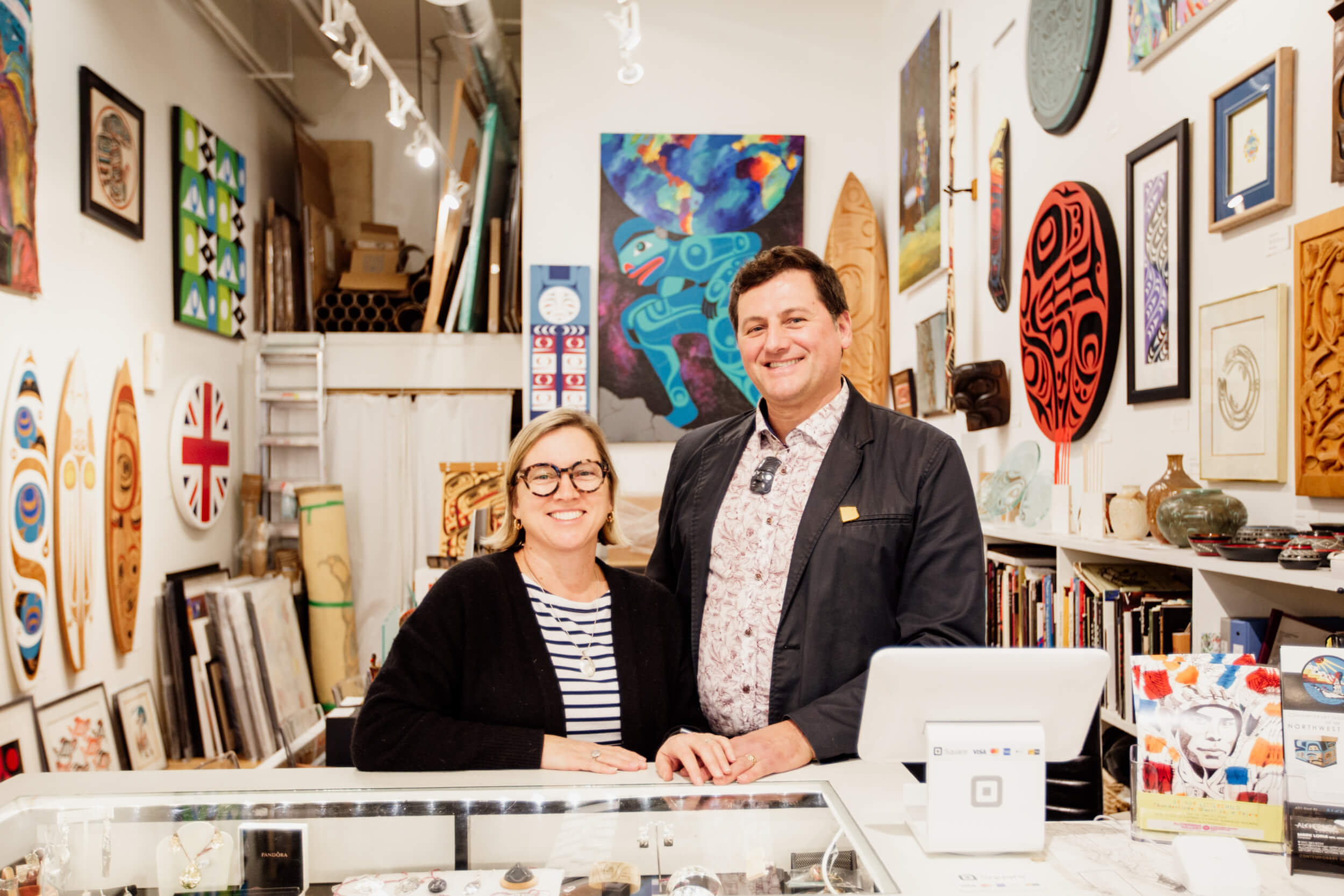
In Conversation with Mark & Mary // Alcheringa Gallery
Name: Mark and Mary Loria
Shop: Alcheringa Gallery
Address: 621 Fort St, Victoria, BC
Instagram: @alcheringa_gallery
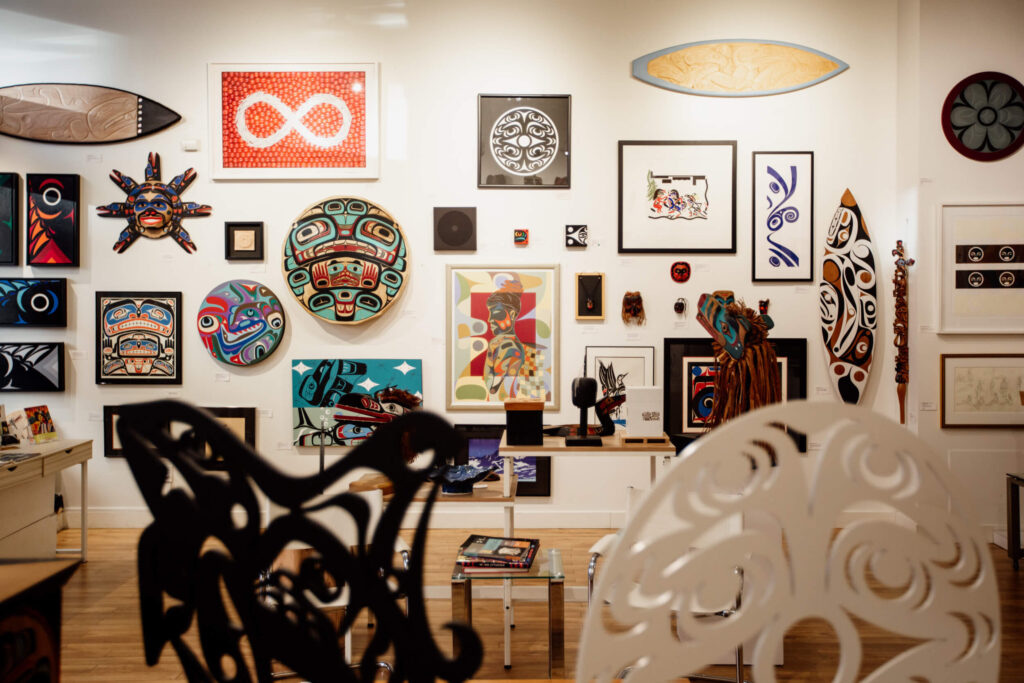
What is Alcheringa Gallery? Tell us about your store name.
Alcheringa Gallery was named by the founder, Elaine Monds, who grew up in Australia. Elaine founded the gallery 40 years ago, originally importing Australian and New Zealand handmade products to Victoria. Alcheringa is a South Australian aboriginal word for the “dreamtime” or “the dreaming place,” which describes the importance of the dream world or spiritual world to indigenous cultures all over the world.
Over the life of the gallery, it became world-renowned for indigenous fine art from both Oceanic and Northwest Coast cultures. Alcheringa Gallery is now focused only on Canadian Indigenous art, specifically Northwest Coast art. Alcheringa is a registered member of the Art Dealers Association of Canada, selling paintings, prints, carvings, jewellery, and sculptures.
Can you tell us about your background? Did you have any retail or gallery experience before opening Alcheringa?
Our background is as artists, art educators, and in arts management. Mary and I met in art school at the University of Calgary in 1990 and have been together since. Mary studied art history and printmaking, earning an Art History degree and later studying, teaching and selling ceramic art. She is currently an educator at Cedar Hill Recreation Centre and the University of Victoria, and sells her work through the Art Gallery of Greater Victoria.
I have a Fine Art degree in visual art (printmaking) from U of C and an Arts Management graduate certificate from Capilano University. I have worked in the arts sector for 25 years working in senior level positions with Opus Framing and Art Supplies, Institute of Modern Art (Australia), Arts Club Theatre Company, Art Gallery of Greater Victoria, Glenbow Museum and Shaw Centre for the Salish Sea.
We both have retail experience, specifically myself, with many years spent as a store manager with Opus Framing and Art Supplies on Granville Island, Vancouver. I have also managed retail operations for not-profit art organizations in my business management roles. Mary has commercial gallery experience as well, but this is our first gallery ownership.
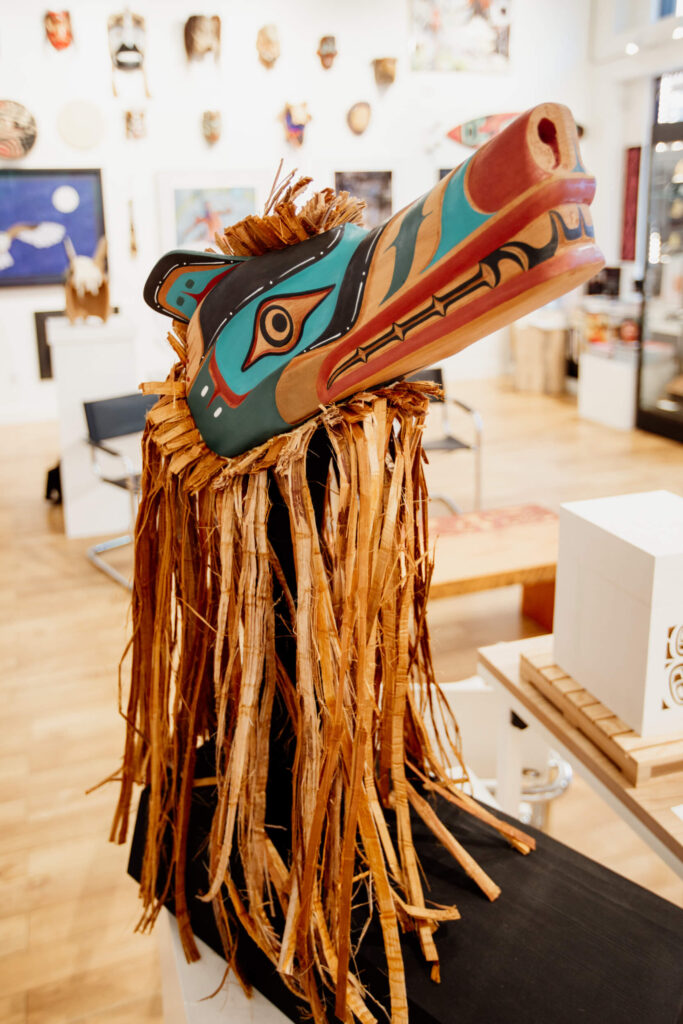
The gallery has been around for over 40 years. When did you take it over? How did it all come about?
We took over Alcheringa Gallery in December 2018. It has been a life-long goal of mine to own and operate a commercial gallery (even creating several ideas and business plans over the years), so when I was between jobs in 2018, we started thinking about it again as a final career chapter for our family. I have had a life-long interest in, and appreciation for, indigenous art and culture, and over my career had worked with some of the top indigenous artists in Australia and the Northwest Coast. We started thinking about opening a contemporary indigenous art gallery, but were already familiar with Alcheringa and didn’t want to split market share in Victoria.
We approached Elaine and she realized we had very similar interests and goals in the support of indigenous artists. We asked Elaine first about partnership, but through a long negotiation period, she made the decision to retire and sell the business to us. We will always be grateful for the opportunity, as it meant not starting a gallery from the ground up as Alcheringa has a strong brand reputation and existing relationships with artists and clients.
Have you always wanted to run your own business? How long did it take you to make your business a reality?
I grew up working for my Dad’s business through high school and university, so I knew what business ownership meant regarding time and commitment. When our children were young, the timing wasn’t right as we needed steady income to support our family. We homeschooled our children (and travelled) when they were young so we could focus on teaching them art, but that meant relying on a single income. Although I always had a dream to own a gallery, I always thought it would remain a dream. But, as our children got older, and as I started working more closely curating and partnering with local indigenous artists, we started thinking more about it over recent years. Given my Dad’s experience in business ownership, he has been great to bounce off challenges with and offer advice. Negotiating to purchase the gallery took many months and there were times when we didn’t think it would happen — but once we had the idea of representing and supporting indigenous artists and culture in our mind, we knew we had to make it happen.
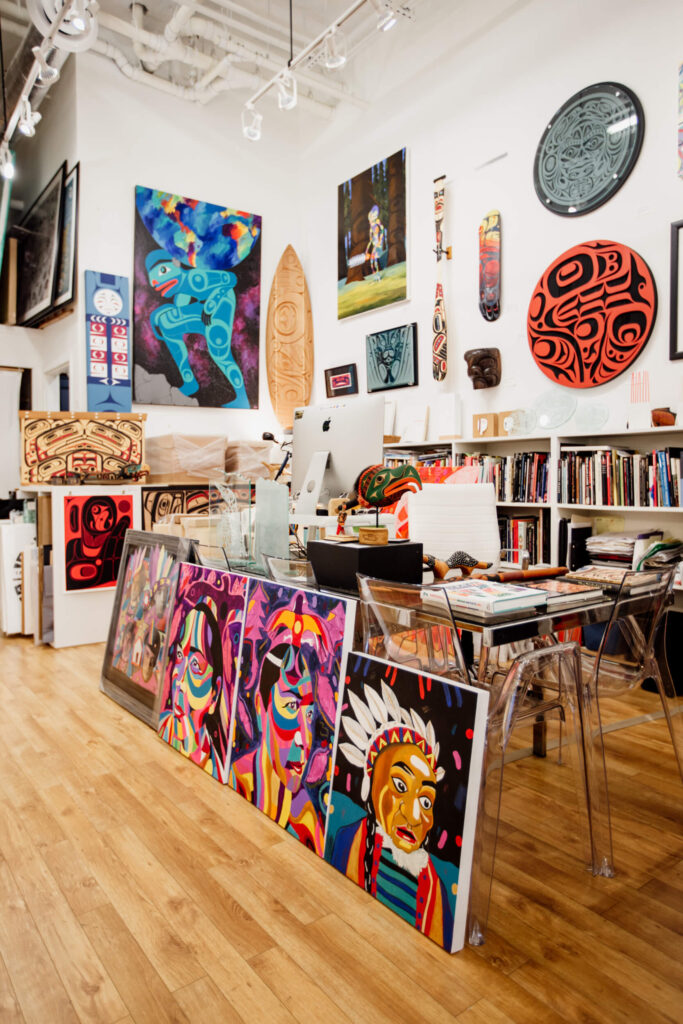
If you had to describe your gallery to someone who hasn’t seen it, how would you describe it? How has the gallery evolved since you’ve taken over? What guides you in your choices?
We would describe our gallery as the place to find the best local (BC/Canadian) indigenous fine art in Greater Victoria. We have art in all different media from contemporary to traditional, and in all price ranges. On top of gallery sales (including shipping all over the world), we offer commissioned work, general consultancy, and certified appraisals as a member of the Art Dealers Association of Canada. We offer art by over 100 Canadian Indigenous artists, and take great pride in dealing directly with the living artists. All artwork sold includes artist biographies and artist statements if available. This helps promote the artists as well as offering further connection for clients. We also never deal in older cultural artifacts as these were not meant for public sale and are mostly unattributable to specific artists. These pieces should be repatriated to the First Nations they belong to.
As mentioned, we shifted the gallery completely to Canadian Indigenous Art (with a focus on Northwest Coast art) almost immediately upon taking it over. This has allowed us to build a stronger reputation with local artists and community, as well as promote our gallery as a place to find “the art from here.” We made physical changes too: opening the space up to give it more of a gallery feel with more wall space; adding seating to encourage clients to stay longer to enjoy and talk about the art; and starting to work more with younger, more contemporary artists.
What guides our choices is putting our artists and their communities first. We believe our business is built on respect and care for indigenous culture and all of our choices are made with this in mind. As non-indigenous directors of an indigenous gallery, our goal is to uphold indigenous rights always, and to promote and support the artists in every way possible. This means listening and responding and working closely at all times. This also means operating our business the right way, including inviting elders for openings and special events, as well as always recognizing traditional territories and being constantly grateful to represent indigenous culture.
Can you tell us a bit about your personal style and aesthetic?
I would say that we are authentic, contemporary, and in tune with social and environmental movements. As artists ourselves, we have a strong knowledge of, and appreciation for, creativity, art history and art and artists in general. As parents of four, it means we have always been practical and live in a small house, so we are conscious about everything. We have also travelled and lived overseas with our family in Australia and Italy, so we try to explore and learn about art and culture internationally as well. We are also urban dwellers, always living in downtown cores and exploring cities by walking and riding bikes.
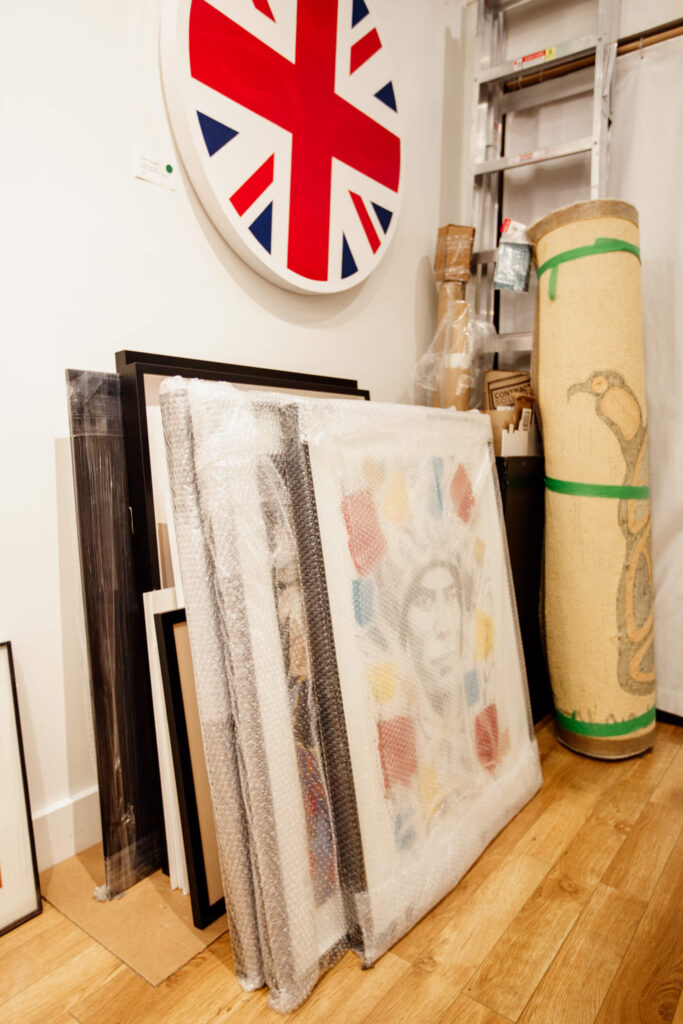
What or who inspires you?
Mark: I am inspired by the resiliency of indigenous peoples throughout the world, especially the Canadian indigenous artists we represent who have experienced residential schools, the sixties scoop and ongoing racism either themselves or through generational trauma. I am also inspired by my parents and grandparents who supported me and taught me about respect and caring. Also by Mary and our children who have been so supportive of my goals. Finally, I have always been guided by the words and actions of Dr. Martin Luther King Jr and Dr. David Suzuki.
Mary: I feel inspired by my surroundings, by this beautiful place where we live. I am very inspired by the indigenous community where we live, as they have been so welcoming and encouraging since we took over the gallery. I am also inspired by our children — I have learned so much from them through their perspectives on life and where we live. They are constantly growing and changing.
Where and how do you source your artist and products in your store?
Many artists have had long relationships with the gallery from before our time, and we have continued to maintain and build those relationships. We have added new artists that peak our interest as emerging artists or those who have a body of work that is of high artistic quality and substance. Many of our younger artists have won emerging artists awards or residencies for their work. As we are dealing in fine art, we are looking for artists who have certain training or mentorships and are interested in making careers out of their art so that we can work with them for years to come for mutual benefit. Most often, our regular artists will just show us new work and we will accept it. Other times, we will ask for art to fill out our broad selection of art. Finally, we will commission or consign artwork for exhibitions.
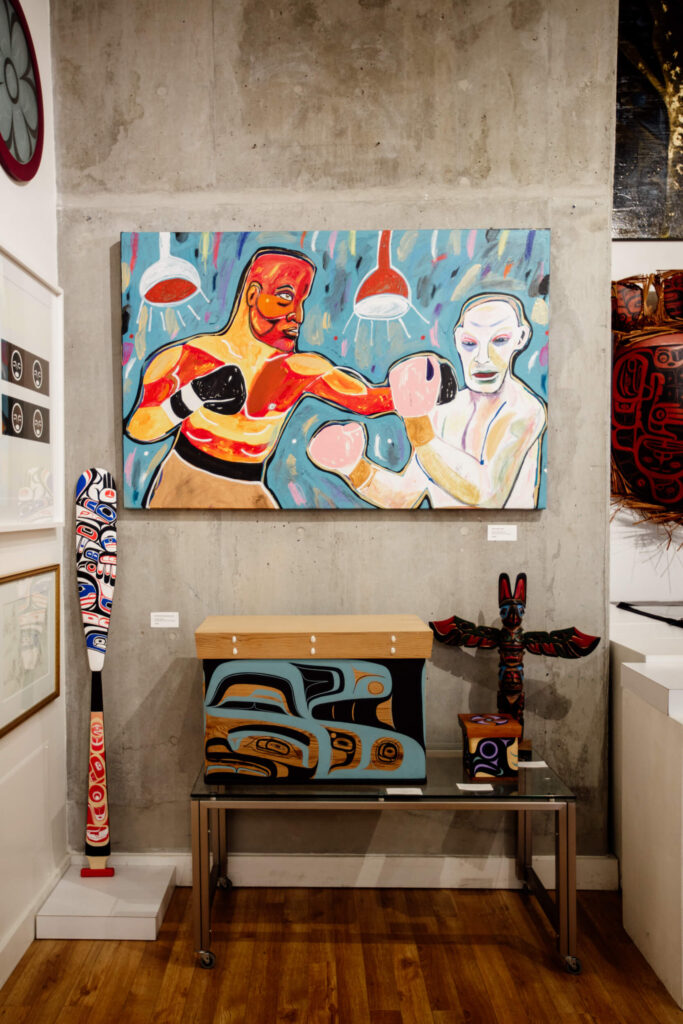
You have a wonderful online gallery shop. Do you do business online? Can you tell us a little about that?
We are thankful for fairly steady business online through our website. We mostly sell and ship prints through the website to Canadian and American clients. We have made some major sales online including carvings and paintings. Online sales also come through inquiries about artwork that leads to collector interest in certain artists. Online sales have been important through the pandemic, but are still a smaller percentage of our overall sales.
What are some of the hardest lessons you’ve had starting your business? How have you overcome them?
As our business was established to buy an existing business, the challenges that we faced were negotiating all of the terms of the purchase. As owning a gallery was new to us, a significant challenge was determining the valuation of the business, most specifically the resale of the inventory. Also, we needed to determine the goodwill and reputation of the business given that artists’ relationships and client list are vital to the business. There was also a steep learning curve in operations but this was overcome quite quickly given our passion for the artists and the business.
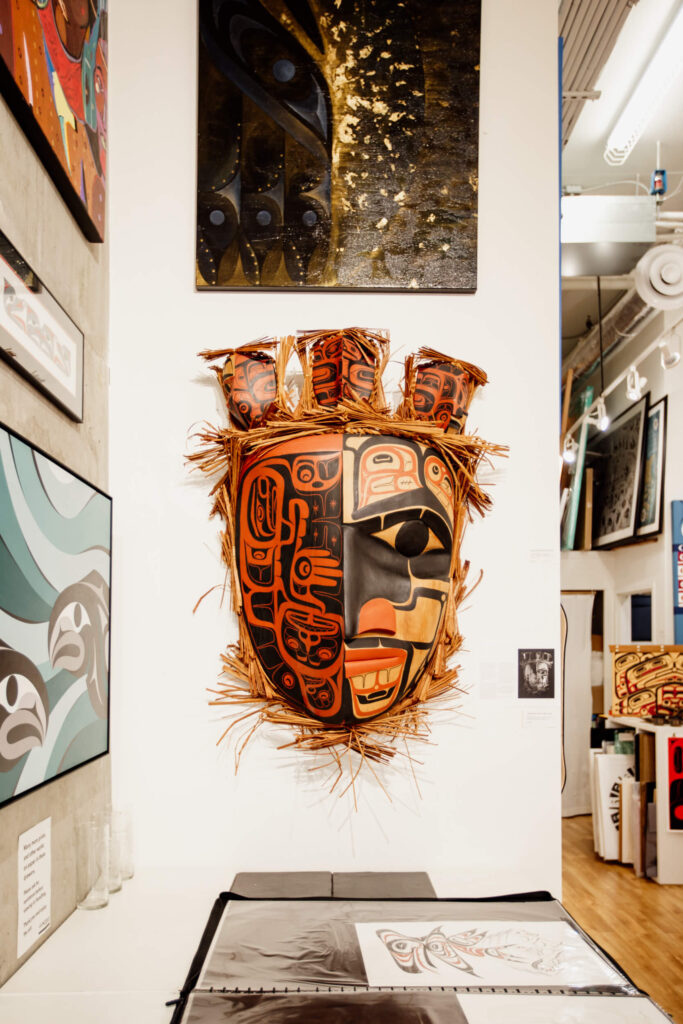
What advice would you give to someone wanting to open up a gallery?
Having a background and interest in art is really important. It’s not like any other business as it is very specific and clients are looking for a strong knowledge and expertise in art. Unlike other businesses that people may have a passion for, most of our work in running a gallery is as an arts consultant — both in supporting and representing artists and working for our clients. Beyond that, experience running a business or organization or taking business classes will always be beneficial, as it is a business at the end of the day.
We are being told to let go of a lot right now and adapt — it’s overwhelming and we’re all trying to cope as best as we can. How are you coping? What’s been working for you?
The way we have been coping is to not try to push the business too hard. What we have been focusing on is getting closer to our regular clients and trying to connect them with the art they are interested in. The bulk of our business is prints, but during the pandemic the majority of our business has been on higher-end carvings and paintings. These larger-ticket artworks need a longer lead time, so that’s what we’ve been focusing on. As most of our regular clients are BC and Canadian based, we have been able to work with them still during the pandemic. The pandemic restrictions also limited us from doing exhibitions, so that, in combination to our focus on regular clients, meant that we delayed doing any new exhibitions for most of 2020.
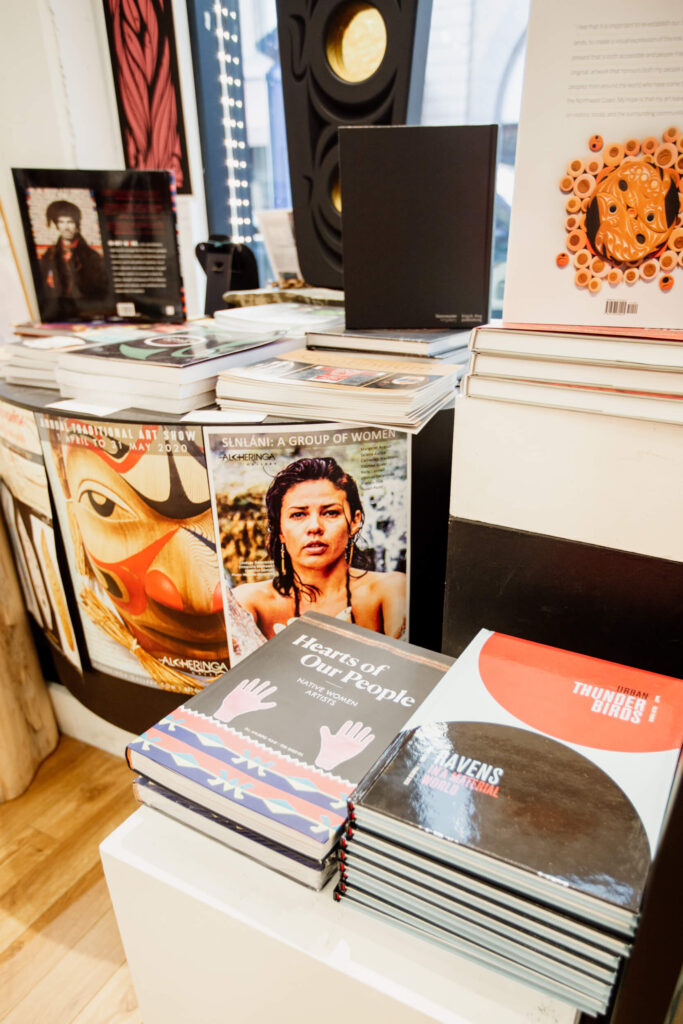
Have you made any hard decisions to get you through this difficult time? Can you share some of those decisions?
The most difficult thing was trying to help and support artists when the times were slow. We made the hard decision to invest in buying art as opposed to consigning more than usual, so we have actually heavily increased our owned inventory tenfold. This helped maintain and build our relationships with artists and in turn, gave our client more options to choose from. The decision to stop doing exhibitions — even when other galleries were starting online exhibitions — was tough but it allowed us to slow down and concentrate on clients.
As we navigate our new reality, what advice would you give to your fellow shop owners on what keeps you moving forward?
Understand and stabilize your core business and diversify when possible. You have to trust yourself and trust your business and not push too hard during this new reality. To our benefit, we have a very niche and established business, and that has kept us going. Diversification for us means having as many mediums and styles and price options as possible and always be showing new art.
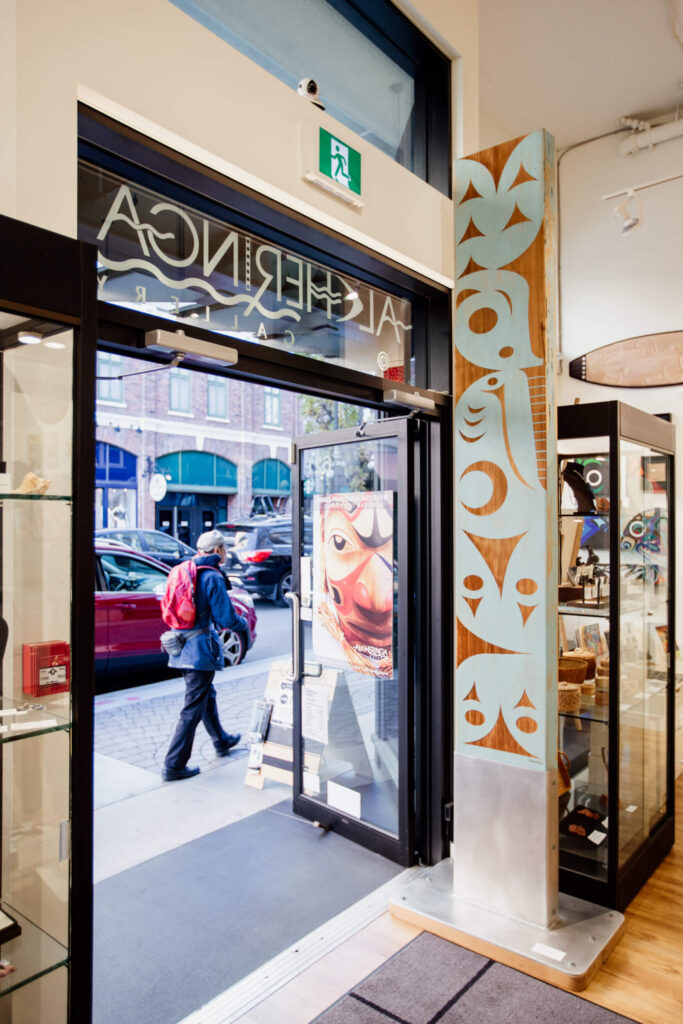
What three words best describe how you are feeling today?
Grateful. Happy. Loved.
Anything else you would like to say?
Our business is indigenous art, so we are so grateful for the indigenous artists who partner with us and share their work with the world. Success for us means making sure our artists are happy and successful as much as possible, and that Canadian Indigenous Fine Art remains strong. We are also grateful to be operating our gallery on Lekwungen Territory of the Coast Salish Peoples, specifically the Esquimalt and Songhees Nations. Finally, thank you to Talking Shop for this opportunity to share and promote our gallery.
